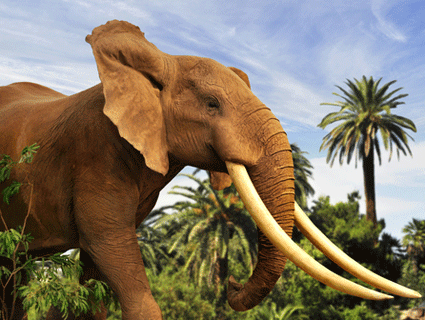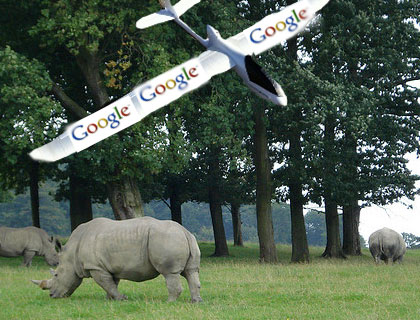
<a href="http://www.shutterstock.com/pic-65615605/stock-photo-african-elephant.html?src=csl_recent_image-3">saddako</a>/Shutterstock
Ivory poachers may have finally met their match: forensic science. A study just published by PNAS describes a carbon-dating technique making it possible to determine the age of elephant tusks—and thus whether a particular piece of ivory has been acquired illegally.
The method involves measuring the radiocarbon—a radioactive isotope of carbon—at the base of a tusk to learn when the elephant died. Kevin Uno, the lead author on the study and a postdoctoral researcher at the Lamont-Doherty Earth Observatory, broke down how it all works: “Plants absorb carbon dioxide and it gets locked into the leaf. Then some elephant walks by, eats that plant, and then builds its tissue, either tusk or hair, from the plant it ate.”
As Uno explained, new tissue forms every day in the elephant’s tusk as it eats, with the base containing the newest tissue. Because the carbon absorbed by plants contains radiocarbon from the atmosphere, researchers can match the radiocarbon level in the tissue. But the key to the technique is something that scientists call the “bomb curve,” the period between 1952 to 1962 during which radiocarbon nearly doubled because of nuclear weapons testing. After the test ban treaty went into effect in 1963, the concentration of radiocarbon in the atmosphere has been diluted at a steady rate. Researchers used samples from primate hair, hippopotamus canines, elephant tusks, and an oryx horn to test their technique.
As the study explains, “Bomb-curve dating of confiscated animal tissues (e.g., ivory statues) can be used to determine whether trade of the item is legal, because many Convention of International Trade of Endangered Species restrictions are based on the age of the tissue.” Because elephants are threatened by extinction, CITES declared a ban on the trade of tusks from African elephants in 1989 and those from Asian elephants in 1975.
CITES estimates that elephant poaching is at its highest level since 2002 (PDF). According to the International Union for the Conservation of Nature, only 423,000 African elephants remain—nearly 50,000 less than there were in 2007. In 2011, 86,000 pounds of illegal ivory were seized worldwide, with China being the largest importer and the US coming in second. Demand in China, where ivory is often used in both art and religious sculpture, has recently increased as a result of the country’s economic boom. Tusks have become a lucrative “conflict resource” in battle zones in Africa, like Uganda, South Sudan, and the Democratic Republic of Congo.
Last year at a Senate Committee on Foreign Relations hearing, then committee chairman John Kerry described how poaching has become an organized crime. “The ivory trade stretches from the African savannah to the Asian market place, and the United Nations Office on Drugs and Crime ranks it as a significant form of transnational organized crime. Multiple reports describe armed men coming across the border from Sudan into the Central African Republic or from Somalia into Kenya to kill elephants and smuggle out the ivory.”
The loss of elephants is particularly problematic because they are a “keystone species in the ecosystem,” says George Wittemyer, an assistant professor at Colorado State University and co-authored the study. “They are the driver of the balance between grass and woodland in the savannah, and they have impacts on water distribution for other species. What we’ve seen in some areas which have lost their elephants is a domination of woody vegetation and the elimination of all grazing species.”
The researchers plan to use their method in tandem with a DNA tool developed in 2004 by the University of Washington’s Center for Conservation Biology. Sam Wasser, the center’s director, analyzed the DNA in elephant dung and created a map of African elephant populations based on his findings, which allows investigators to determine where ivory comes from.
By using the radiocarbon dating technique with the DNA tool, researchers could pinpoint “poaching hotspots” and notify countries to direct resources to those areas. In addition to being relatively inexpensive—carbon-dating a tusk costs approximately $500 and the DNA analysis costs about $100 plus labor—the process is fairly quick, taking one to two weeks.
Beyond the benefits this could have for tracking illegal ivory trade, the technique has more far-reaching scientific implications as well.
“Part of my research involves using teeth and tusks as a tape recording of the environment in which the animal lived,” says Uno. “It’s a useful tool for looking at ecosystem change or tracking climate change in a particular region. We found thirty years of life in an elephant tusk we looked at,” he continues. “It doesn’t get any better than that.”













